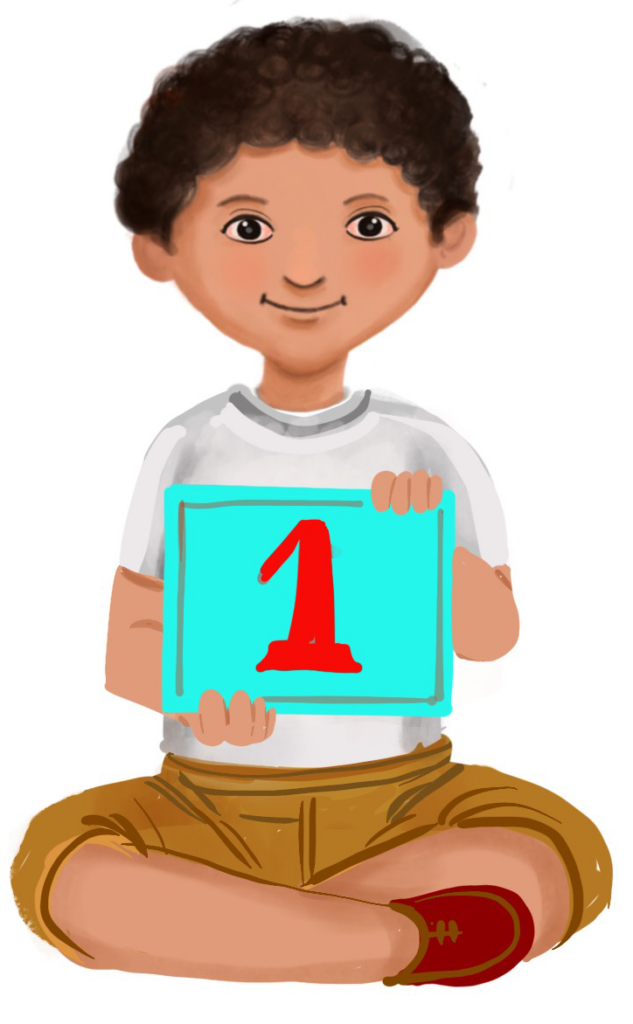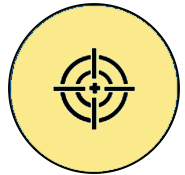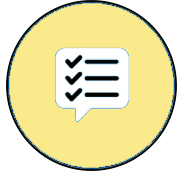
Numbers 71 to 100
Week 1
Learning Outcome
Recognises and reads number names and numerals up to 100 using the place value concept.
 Objective
Objective
Children will be able to form and read numbers from 71 to 100.
 Prerequisites
Prerequisites
Children should be able to identify and read aloud numbers from 1 to 70.
Introduction
Resource required:
● Flashcards from 1 to 100
● Colour pencils/Sticks
● Base ten blocks
The teacher starts the class with usual greetings. The teacher can then proceed with revising the numbers from 51 to 70 by showing flashcards and asking the children to identify the numbers.
The teacher can have students practice counting from 51 to 70 and encourage them to say numbers aloud to reinforce their memory.
- To start with, the teacher has 7 bundles of 10 straws or coloured pencils each and individual straws or coloured pencils.
- The teacher should explain that each bundle represents 10, and each individual coloured pencil represents 1.
- Let us now build 71. The teacher shows them 7 bundles of colour pencils and one individual colour pencil and explains that 7 bundles mean 70, and combined with 1 pencil, it makes 71. That is, there are 7 tens and 1 one, making it 71.
- The teacher can also use Base 10 blocks and build the numbers.
- The same can be done for 72, 73, up to 79.
- To show 80, the teacher adds one ‘ones’ to 79. That makes 7 tens and 10 ones.
- The teacher shows how 10 ones will now form a group and become a bundle of 1 ten to make 80.
- The same continues till number 100 is formed.
- To check the understanding, the teacher can call one child and give the child 8 bundles and 4 individual pencils. The child has to count the bundles and individual pencils and identify it as 84. The child should then proceed to identify the flashcard with 84 written on it. This should be repeated with all the children until they are able to understand and identify the numbers.
- To help the children become familiar with counting, the teacher can distribute the flashcards from 71 to 100 and make the children say their cards in order of numbers as a rhyme. This can be repeated so that children are familiar with the order of numbers. This is a fun way to practice counting and can help children recognize and become familiar with the numbers.
- The teacher can proceed with the following activities to reinforce the concept.
Flashcards: Number cards 71 to 100 – Coming soon
Flashcards: Picture cards base ten blocks – Coming soon
Flashcards: DIY Tactile number cards 71 to 100 – Coming soon
Video: Numbers 71 to 100 – Coming soon
ISL Video: Numbers 71 to 100 – Coming soon
Activity 1: Act Out the Numbers
Objective: To learn to identify the numbers from 71 to 100.
Importance of the activity for children:
Helps in developing:
- Numerical Skills (Number recognition, sequencing, place value)
- Cognitive Skills (Memory, recall, association)
- Gross motor Skills (Walking, acting, gesturing)
- Fine motor Skills (Picking a chit, placing the chit)
- Problem solving Skills (Strategic planning to convey the number through body language)
- Social Skills (Patience, appreciating others, waiting for their turn)
- Emotional Skills (Builds confidence in numeracy, promotes a sense of achievement that boosts self-esteem, and encourages pride in learning new skills)
Resources required:
Flashcards from 71 to 100
Setting for the activity:
The activity can be done indoors or outdoors depending on the space availability.
Type of activity: Group activity
Preparation of activity:
The teacher should place the flashcards in front of the children, number side down.
Role of the teacher: Demonstrator and facilitator
Procedure:
- Place the flashcards, number side down, on the table.
- The teacher should call out a child and ask the student to pick a card without showing it to the class.
- The child should act out this number without reading it out aloud. The child can use body parts to convey the number.
- The others should guess the number.
Observations:
- Is the child able to correctly identify and pick a number from 71 to 100?
- Can the other children recall and guess the number correctly based on the act?
- Does the child use any strategy (e.g., fingers, movements, symbolic actions) to make the number clear?
Conclusion:
The children will learn to identify numbers from 71 to 100.
Video: Act out the number – Coming soon
ISL Video: Act out the number – Coming soon
Activity 2: Number Line Jump
Objective:
To identify numbers from 71 to 100.
Importance of the activity for children:
Helps in developing:
- Numerical Skills (Number recognition, sequencing, place value)
- Cognitive Skills (Memory, recall the sequence, association)
- Gross motor Skills (Walking, jumping)
- Social Skills (Patience, appreciating others, waiting for the turn)
- Emotional skills (Builds confidence in numeracy, promotes a sense of achievement that boosts self-esteem, and encourages pride in learning new skills)
Setting for the activity:
The activity can be done indoors or outdoors depending on the space availability.
Type of activity: Individual activity
Preparation of activity:
The teacher should draw a number line on the ground, with enough space between numbers. The teacher can include numbers from 71 to 100.
Role of the teacher: Demonstrator and facilitator
Procedure:
- The teacher should call out a number.
- The child should jump and reach that number marked on the number line.
- Alternatively, the teacher can also ask the child to go to a particular number and then move forward to the next number.
- The teacher continues till all the students get a chance.
Observation:
- Can the child accurately locate and jump to the number called out?
- Is the child able to move to the next number correctly when instructed?
- Does the child navigate the number line correctly and confidently?
- Is the child able to jump, land, and balance safely on the number?
Conclusion:
The children can identify the numbers in between 71 and 100.
Video: Number Line jump – Coming soon
ISL Video: Number Line jump – Coming soon
Cross-Curricular Connection:
- Physical Education Class:
- Cards with one number from 71 to100 written on them can be placed in different places.
- When the whistle goes, the children should run and collect as many cards as possible.
- When the closing whistle blows, they should read out the numbers in sequence starting from 71.
- Cards not picked up should be collected and inserted, and the sequence can be read out.
- Language Class:
Children can be asked to speak a few sentences using numbers 71 to 100. - Art Class:
- Children can form numbers 71-100, 3 each as instructed by the teacher using play dough
- After completion, the numbers can be displayed in sequence, and each child can read aloud the numbers displayed.
Assessment:
The teacher can give the practice worksheet to children that can be followed by an assessment worksheet.
Assessment: Practice Worksheet – Numbers 71 to 100 – Coming soon
Assessment: Practice Worksheet – Numbers 71 to 100 (Enlarged) – Coming soon
Assessment: Worksheet – Numbers 71 to 100 – Coming soon
Assessment: Worksheet – Numbers 71 to 100 (Enlarged) – Coming soon
Check list for teacher:
| Activity | Yes | No | Sometimes |
| Children can: | |||
| Count the numbers till 100 | |||
| Identify the numbers up to 100 | |||
| Form the numbers up to 100 | |||
| Read the numbers up to 100 | |||
| Complete the activities in the given time | |||
| Do the activities independently | |||
| Express verbally and through actions, expressions, or gestures |
Home Activity
Join the dots from 71 to 100 and find out what is hiding behind the dots! Give it some colour too!
Worksheet: Join the dots – Coming soon
Teacher Resource Document – Coming soon
| Source and Attribution of images: All images used in the above Assets and Aids are originally created. |
| This digital material has been developed by the Sri Sathya Sai Vidya Vahini Inclusive Education Project, a unit of Sri Sathya Sai Central Trust, Prasanthi Nilayam, as a collaborative offering in the service of our nation. |